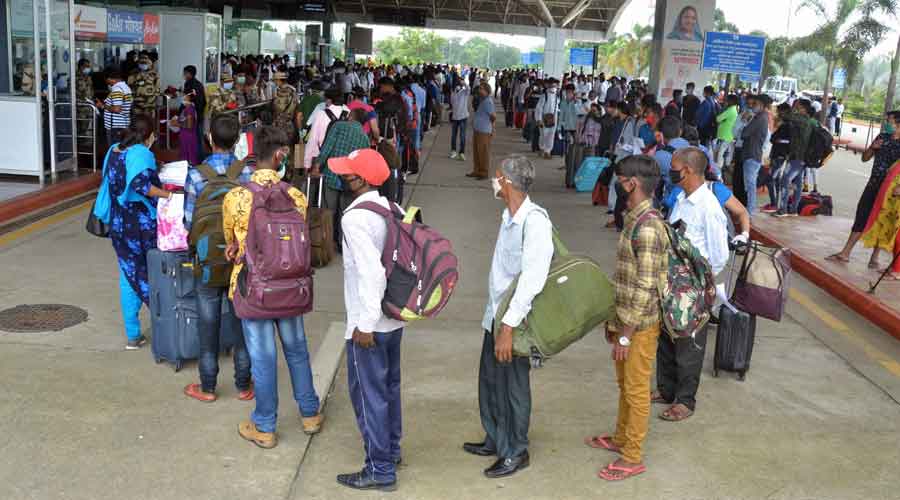Over 1.5 crore jobs were lost in India in May this year and the monthly unemployment rate reached 11.9 per cent, the highest since last year’s national lockdown, a survey by a private research group has shown.
Some 14.73 per cent people from the working age group were unemployed in urban areas and 10.63 per cent in rural areas, according to the Centre for Monitoring Indian Economy (CMIE).
The CMIE surveys the unemployment rate and job losses and publishes findings for every week, month, quarter and year.
The 11.9 per cent unemployment rate in May marks a huge jump from the 7.97 per cent recorded in April, and is the highest since June last year when unemployment was 10.18 per cent.
Only during the national lockdown was the unemployment rate higher, reaching 23.52 per cent in April last year and 21.73 per cent in May 2020.
The CMIE counted 37.545 crore employed people in May this year, including those involved in various kinds of informal work. In April, 39.079 crore people were employed, which means that over 1.53 crore jobs were lost in May.
Some 38.877 crore Indians were employed at the end of last December, their number rising to 40.07 crore by the end of January this year. The number fell to 39.821 crore in February and to 39.814 crore in March before rising to 39.079 crore at the end of April, the CMIE found.
Economist Sunil Ray, former director of the A.N. Sinha Institute of Social Studies, Patna, said that whenever there are job losses, the migrant labourers and unorganised-sector workers become the worst sufferers.
“Nearly 90 per cent of the workforce is in the unorganised or informal sector. They are the most vulnerable. During this current decline in jobs, the vulnerable sections are the migrants, vendors, the self-employed, and casual and agricultural workers,” Ray said.
He said those engaged in white-collar jobs too get affected: with jobs shrinking in the formal sector, professionals are asked to work from home with a salary cut.
Besides, those shown as employed in surveys are not fully employed, he said.
“Particularly in the agriculture sector, more people are engaged in work that can be done by fewer people. This disguised unemployment is a form of unemployment that does not get reported in surveys,” Ray said.
He was referring to how, with hardly any other jobs available, all working-age members of farmers’ families tend to pitch in for work on their land that can be done by fewer people.
Ray said that after the states lift their lockdowns, there may be a sudden rise in economic activity and employment but it would be temporary.
“The present economic model of corporate-led development will fail to solve the unemployment problem. What is needed is localised entrepreneurship where small manufacturing units can be set up to utilise local resources for the production of goods and services,” he said.
For example, Ray said, agriculture-based industries can be launched in the rural areas depending on the production of crops. These industries can engage in processing, storage and transport.
Other possible local initiatives include the establishment of skill training centres, small healthcare facilities and manufacturing units, but the government needs to provide some assistance to start these, Ray said.
If the situation is not addressed, there can be a big national movement centred on unemployment, Ray said.











